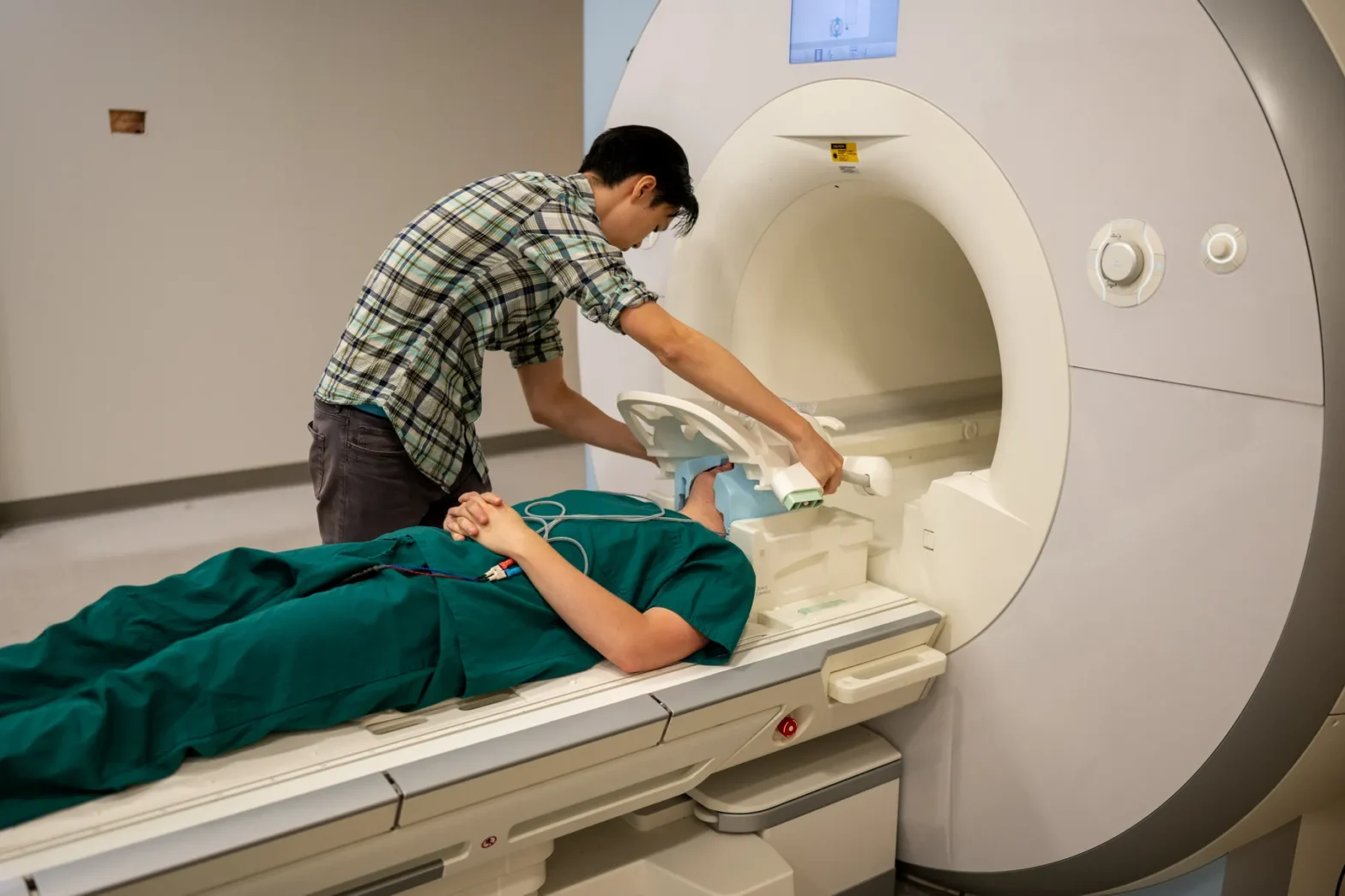An AI-powered “brain decoder” can now read your thoughts with surprising accuracy.
Scientists from the University of Texas at Austin have achieved a groundbreaking feat: translating people’s brain activity, including their unspoken thoughts, into actual speech. This development, detailed in a study published in Nature, marks a significant advancement in brain-computer interface (BCI) technology.
Traditionally, researchers have decoded unspoken language by implanting electrodes in the brain, which required invasive surgery. While effective, this approach was limited to specific patient groups, such as those with paralysis, for whom the benefits outweighed the risks. Non-invasive techniques, on the other hand, could only decode basic brain states or short phrases, leaving much to be desired.
Now, researchers have introduced a non-invasive BCI that can decode continuous language directly from the brain, allowing others to understand the general gist of a person’s thoughts without them uttering a single word.
So, how is this possible?
The breakthrough stems from the combination of two technologies: functional magnetic resonance imaging (fMRI) scans, which measure blood flow in different brain areas, and large AI language models, similar to ChatGPT.
In the University of Texas study, participants listened to 16 hours of storytelling podcasts while scientists tracked changes in their brain’s blood flow using fMRI. Using an AI model, researchers associated specific phrases with the unique brain activity patterns observed in each participant.
Given the vast number of possible word sequences, the scientists employed a language model, GPT-1, to refine the decoded sequences into coherent English and predict the most likely words to follow. The result is a decoder that captures the essence of the thought, even if it doesn’t translate every word accurately.
For instance, when a participant thought, “Look for a message from my wife saying that she had changed her mind and that she was coming back,” the decoder translated it to: “To see her for some reason I thought she would come to me and say she misses me.”
While not word-for-word, the translation preserves much of the original meaning, representing a significant leap beyond previous brain-reading technologies and raising serious ethical questions.
The potential applications of brain-computer interfaces (BCIs) are vast, ranging from assisting paralyzed patients to controlling devices with thoughts. However, they also present significant ethical challenges.
One concern is privacy. Our brains are the final frontier of privacy, housing our personal identity and most intimate thoughts. If our brain data is no longer under our control, what is?
Imagine a future where companies have access to our brain data for marketing purposes, using it to target us with irresistible products. Advertisers are already exploring “neuromarketing,” studying how our brains react to commercials to influence our purchasing decisions.
Another concern is the potential for government surveillance or law enforcement using BCIs for interrogations. In a world where authorities can eavesdrop on our mental state without our consent, our right against self-incrimination could become meaningless.
Some neuroethicists argue that revamped human rights laws are needed to protect individuals from the misuse of these technologies.
While the University of Texas study is promising, it also underscores the need for safeguards. The decoding process only worked with cooperative participants who had consented to training the decoder. If participants resisted by naming animals or counting, the results were unusable. However, future advancements could bypass these requirements, posing a threat to cognitive liberty.
As Nita Farahany, author of The Battle for Your Brain, warns, “We have a last chance to get this right for humanity.” This paper serves as a stark reminder of the ethical challenges we face as we venture into the uncharted territory of brain-computer interfaces.






















